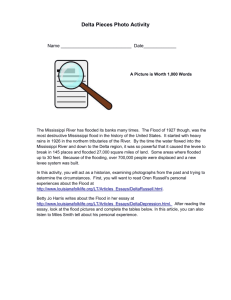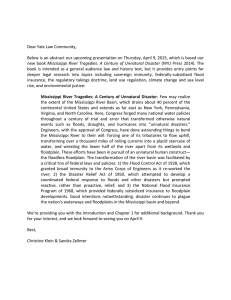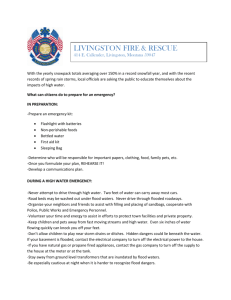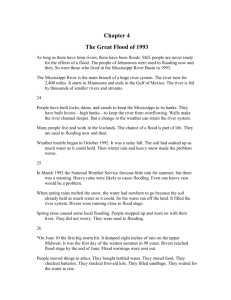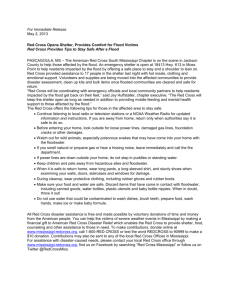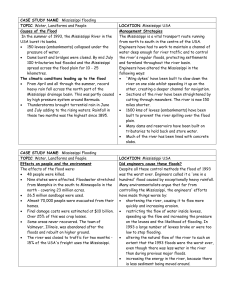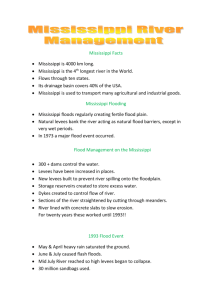Case Study: The 1993 Upper Mississippi River Basin Floods
advertisement
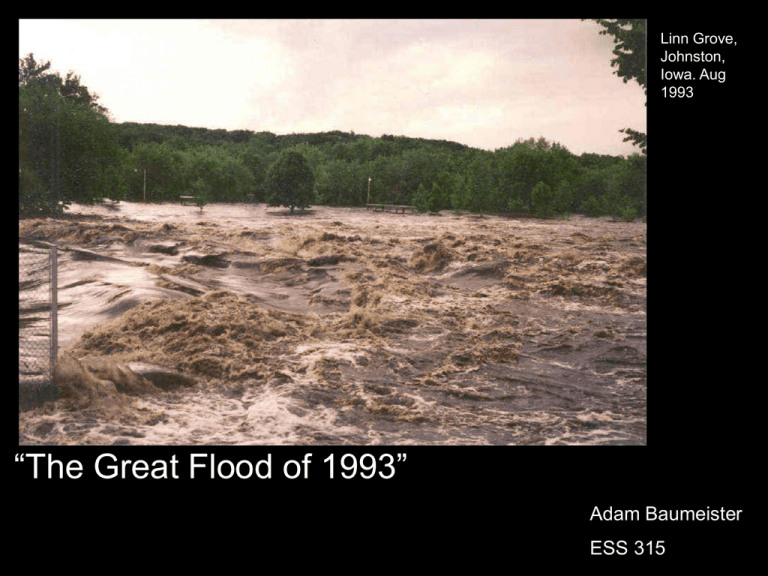
Linn Grove, Johnston, Iowa. Aug 1993 “The Great Flood of 1993” Adam Baumeister ESS 315 Watershed for the Mississippi River •Compare the average rainfall for the Mississippi basin (above), with the averaged precipitation for the same region From April to September (right). •If you add “giant drainage basin” to “really big river” and multiply it by “four times as much rain as usual, you get… Veenker Golf Course, Ames, IA, 1993 …Practicing your rowing on a golf course. Some important facts: •The vast majority of the Mississippi drainage basin is one big open topped aquifer. •Fall of 1992 had dramatically high rainfall throughout the northern Midwest, leaving the region fairly well saturated when winter set in, and that winter saw heavy snowfall as well. •Spring of 1993 started off with heavy rainfall as the snow was melting, raising concerns of flooding even as early as the first week of April that year. •A “Flood” as defined by the USGS is “an overflow or inundation that comes from a river or other body of water and causes or threatens damage. Any relatively high streamflow overtopping the natural or artificial banks in any reach of a stream. “ Water Volumes: • Average Flow for the Mississippi is 450,000 cu ft/s (12,743 m3/s) • For the Flood of 1993, it peaked at 541,000 ft³/s (15,300 m³/s), and broke 92 different “Crest Records” along the rivers. St. Louis saw a maximum flood height of 49.47 feet on August 1st. Damage Report: Darker shades = Greater $$$ More… Total Damages: • Some locations on the Mississippi River flooded for almost 200 days while locations on the Missouri neared 100 days of flooding. • Approximately 10,000 homes were destroyed as a result of the flooding. • 15 million acres (60,000 km²) of farmland was inundated. • The floods cost thirty two lives officially; however, a more likely target is suspected to be around fifty people. • An estimated total 20 billion dollars in damages across all areas. Some more facts: • 400,000 square miles of land in the Missouri and Mississippi basins was officially declared “flooded”. • Floodwater removed more than 600 billion tons of topsoil from the heavily agriculturally developed Midwest, and deposited untold amounts of silt and sand in their place. • Barge traffic on both rivers was completely stopped for two months. • Numerous water and sewage treatment plants across the affected area were flooded and deactivated or destroyed. The water treatment facility in Des Moines, Iowa, for instance, has its levies fail, and caused a complete shutdown of service of fresh water for the entire downtown and southern end of the city of ~350,000 people for 18 days, and running water of any sort for 11 days. References: • http://en.wikipedia.org/wiki/Great_Flood_of _1993 • http://www.dnr.state.ne.us/floodplain/PDF_ Files/FloodUpdateStory_Rev3.pdf • http://mo.water.usgs.gov/Reports/1993Flood/ • http://el.erdc.usace.army.mil/flood/gifs.html • http://sciencepolicy.colorado.edu/admin/pu blication_files/resource-116-1996.03.pdf
